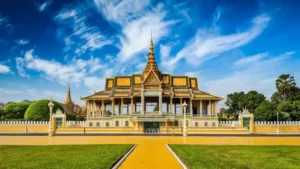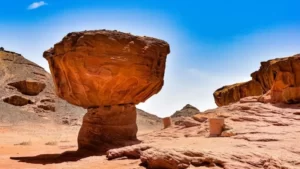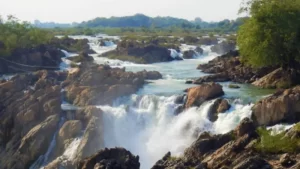In this blog, I have tried to introduce slightly off-the-beaten path travel destinations and a few alternatives to famous ancient towns like Lijiang 丽江 or Fenghuang (凤凰) which have become overcrowded with tourists, mainly historical villages.
A short article about the Miao village Dehang (德夯) was the first one about a place I did not like. If you are in Hunan and looking for authencity, I have already warned you not to go to Qianzhou (乾州). In this same spirit, let’s talk about Shuanglang (双廊), on the banks of Erhai lake (洱海), just 45 minutes by bus from Dali (大理).
“Don’t go there, you won’t like it”
In an article from the China National Geographic, Shuanglang was loosely presented as a base for a new type of trendy Chinese bohemians who escaped the toxic environment of the country’s megalopolis. Meeting the Chinese bobos in their rural escape sounded like an interesting experience.
When I told a few Yunnan-based expat friends about my plan to go to Shuanglang, they were very blunt: “don’t go there, you won’t like it”. I was also told that “Shuanglang represents everything that went wrong with the development of tourism in Yunnan”.
I was curious to see how bad it was, and it wasn’t sad.
So, Why Go to Shuanglang?
Many Chinese and foreign tourists are disappointed with Lijiang (丽江) or Fenghuang (凤凰), because of the year-round crowds and over-commercialisation. In spite of that, they are places worth seeing because there are enough narrow streets and hidden alleys. Shuanglang however is bad on a whole other level.
Over the past couple of years, I have become more aware of the consequences of mass tourism may have on historical villages. So, it’s precisely to see how chaotic tourism development can be that I decided to go to Shuanglang.
Featured: Travel Upside Down – Lifestyle – www.simplelivingplan.com
A Taste of Chaos
Shuanglang is a dusty and noisy little town. Since 2008 – 2009, a crowd of entrepreneurs from northern China and Guangdong province have come and built concrete hostels and guesthouses on the lake’s shores.
Honestly, Shuanglang could have been an ideal town where travellers could wake up with an impressive view on the lake. However, the town is the antithesis of sustainable urban planning . It seems as though there was no oversight from the local government.
Parts of the lakefront have been de facto privatised by guesthouses which have been built along narrow streets perpendicular to the only car-jammed one-way street that runs through the village. Further down, another part of the lakefront, a boardwalk is lined with trinket stores and expensive restaurants (imagine Lijiang near a polluted lake).
Beyond the chaos, the noise, the dust, the deafening honking, what shocked the most was the pollution of the Erhai lake. My guess is that the wastewater coming from all the guesthouses in town go directly into the lake. Algues, plastic bottles and papers thrown by tourists who are off to the Nanzhao island (南诏岛) blankets the lake.
Hidden in back alleys, ancient courtyard houses, which contrasts with the fast-and-cheap concrete guesthouses, are home to a few impoverished locals. Preservation of cultural heritage is a foreign concept.
In the middle of all of that, a slogan in red characters ironically proclaimed “建设新农村,倡导新生活” (Build the new countryside, Start a new lifestyle).
Shuanglang Mon Amour
Yet, judging by the amount of fashionably dressed girls whom I saw trying to walk with their insanely high heels land looking for a hotel at the same time, it seems that Shuanglang is THE place to go. If you have been to Dali (大理) and have waited for a bus on the lower-main road (to go towards Jianchuan 剑川, Shaxi 沙溪 and Lijiang 丽江 for example), you have seen lots of buses heading to Shuanglang (双廊).
If your time in China and Yunnan is limited, of course, do not bother, there are enough villages worth of a visit and that are far better than Shuanglang. There are enough villages that are on the verge of radical change in the province and nice places on the Tea and Horse Road (茶马古道) where you’ll get a taste of history.
If you are a scholar looking for a research site for your comparative study of the development of China’s domestic tourism or simply curious after reading this, then go … who knows, you might fall in love with Shuanglang (but I have my doubts).
Don’t get me wrong, I kinda enjoyed this trip to Shuanglang. Had I not been warned about how bad it is, I would have been terribly disappointed though.







